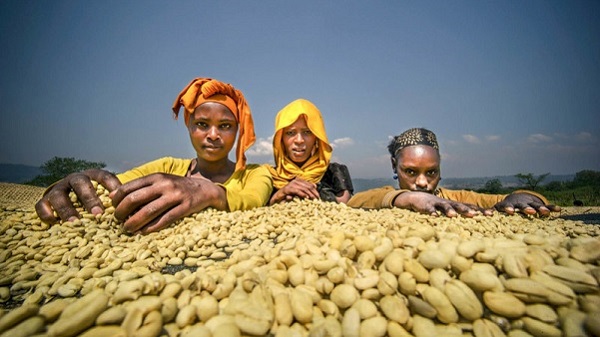
Ethiopian coffee farmers are “on the front lines of climate change,” says Aaron Davis, a scientist at the Royal Botanic Gardens, Kew, in London, and one of the study’s authors.
By Courtney Columbus (NPR) |
Ethiopia gave the world Coffea arabica, the species that produces most of the coffee we drink these days. Today, the country is the largest African producer of Arabica coffee. The crop is the backbone of the country’s economy – some 15 million Ethiopians depend on it for a living.
But the effects of climate change – higher temperatures and less rainfall – could take a toll on the country’s ability to farm this treasured crop. Climate data shows that rainfall in Ethiopia has declined by almost 40 inches since the 1950s. And the frequency of droughts has increased in recent years, affecting coffee growing regions as well.
Ethiopia could lose from 39 to 59 percent of its current coffee-growing areas to climate change by the end of the century, according to a new study published in Nature Plants.
Ethiopian coffee farmers are “on the front lines of climate change,” says Aaron Davis, a scientist at the Royal Botanic Gardens, Kew, in London, and one of the study’s authors. He says many coffee farmers have told him that they are experiencing less frequent harvests.
A 2012 report by the Famine Early Warning Systems Network and other U.S. agencies found that continued warming in Ethiopia could reduce the country’s coffee-growing area, but it didn’t offer details on the extent of that potential impact.
The authors of the new study used satellite imagery and climate models to get more detailed projections on what parts of Ethiopia would be suitable for growing coffee in the coming decades. The team then tested their model’s accuracy by doing some “rigorous ground-truthing,” says Davis. Over several years, he and his colleagues traveled to Ethiopia to verify their satellite imagery and model projections against actual conditions on the ground.
While he was in central Ethiopia in 2015, Davis says he saw the effects of drought firsthand.
“When we arrived, hundreds if not thousands of hectares of coffee were completely dead,” he says. This was a highly productive plantation in the Harar region that had been around since 1910. “And it just seemed that it had reached the tipping point.”
Read the complete story at NPR
——
See also:
- HEALTH: Does Coffee Offer Health Benefits?
- Garden of Coffee: Grown and Roasted in Ethiopia
- Ethiopia to Introduce System to Prevent Illegal Practices on Coffee
- Italian Groups Leading $2.6M Investment in Ethiopian Coffee Industry
- Ethiopia: Developing Its Coffee Industry Could Be a Way Out of Poverty
